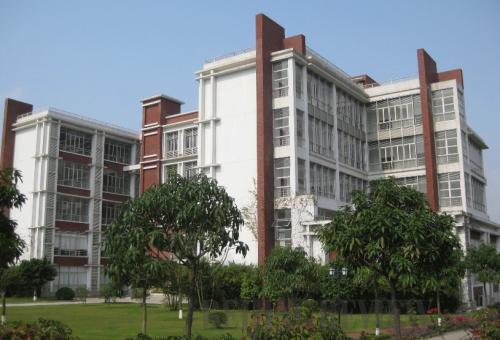|
Zhu's independent, pioneering spirit first became evident in 1999, soon after he took over the University of Science and Technology of China.
Responding to a call from the government to boost domestic demand, universities across China expanded their enrollments in the year, many at the price of education quality.
The University of Science and Technology of China was no exception. In 2001, it enrolled 1,860 undergraduate students, doubling the figure in the early 1990s. When this pace of expansion did not satisfy Ministry of Education officials, Zhu disobeyed their orders and stabilized enrollment.
As other universities raced to buy up land and open new campuses, Zhu remained unmoved.
This time, from the outset, Zhu wanted the SUSTC to be totally different.
With the SUSTC, Zhu seeks a return to basics, hoping to restore the long-lost academic integrity of Chinese universities, according to the university website.
"In past decades, our universities have all been guided by bureaucracy instead of the needs of academic research," he said.
Different from those ever-expanding, profit-oriented higher learning institutions, Zhu envisions a new kind of university, small and research-focused like the California Institute of Technology or Rockefeller University.
The SUSTC will have 1,500 undergraduates and 500 graduates specializing in science and engineering—small by Chinese standards—according to Zhu.
Instead of the candidates who scored high in the national college entrance examination, students of the SUSTC's experimental classes will be handpicked by Zhu from second-graders of senior high schools before the exam.
"This is to keep the students' originality and learning vigor from being smothered after a year's intensive study for the exam," Zhu said.
 |
|
NEW CAMPUS: Buildings of the South University of Science and Technology of China takes shape in Shenzhen, south China's Guangdong Province (FILE) |
For the experimental classes, all teaching sessions will be conducted in English. In the first two years, courses in mathematics, physics, chemistry, biology, computing and English will be offered. During the last two years, students can choose their own research focus.
In its bid to become a paragon of education reform, the Shenzhen Municipal Government paid nearly $1 billion for the land for the SUSTC's campus.
Several hundred houses have been demolished and their residents resettled to make way for the 500-acre campus.
Since January last year, the university has been operating from a temporary campus that once was the Shenzhen Financial Engineering Institute of Nankai University.
On May 24 last year, the MOE sent a team of experts to inspect the SUSTC's preparation who, reportedly, all thought highly of the efforts of Zhu and his team.
Zhu was hopeful that with a permit from the ministry, the university could begin recruiting students before September 2010, the start of the new school year.
"I've been waiting anxiously for a reply from the ministry," Zhu told China News Weekly.
The MOE held a special meeting in September 2010, agreeing to the construction of the buildings, but not the university itself.
Construction finally kicked off on September 30. On the same day, 55 candidates took part in examinations for positions at the university's administrative offices.
"The process of reporting and seeking approval for every single endeavor proves the existence of excessive administrative power on the shoulders of education," Zhu said. "The Higher Education Law and other related rules and regulations allow no autonomy. What we are doing now is cracking the barrier, little by little."
According to Zhu, their current efforts are focused on negotiating with the Shenzhen Municipal Government to pass provisional regulations for the SUSTC.
"The provisional regulations will stipulate the school is an institution administered by a corporate legal person," Zhu said. "In this way, unlike other universities in China, the SUSTC will no longer be a government-managed institution."
The provisional regulations, drafted by the Shenzhen Legal Affairs Office, are expected to have input from both Zhu and the Shenzhen Education Bureau.
The first draft has been sent to Zhu's office for further revision. They will be in effect for about two years, after which better-rounded regulations will begin.
This type of institutional reform is seen as fundamental by Xiong Bingqi, an education expert with Shanghai Jiaotong University. He said the Higher Education Law did not go against the SUSTC's reforms, but the law must be improved to ensure the autonomy of the university.
"If the SUSTC becomes the first breakthrough, more will follow and reform toward de-bureaucratization and autonomy will have a promising future," Zhu said.
Progress of the SUSTC
March 2007: The Shenzhen Municipal Government announces an experimental university—South University of Science and Technology of China.
September 10, 2009: Zhu Qingshi is appointed president of the planned university.
January 2010: The university moves onto a temporary campus.
September 1, 2010: Su Liuyi, 10, becomes the university's first student.
September 30, 2010: Construction of university campus begins.
December 15, 2010: The university announces plan to enroll 50 students for its experimental classes.
(Source: SUSTC) | 